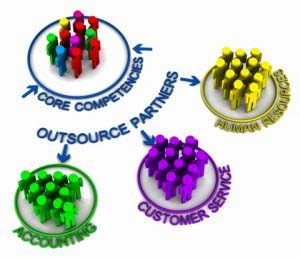by virtualworks | May 22, 2023 | Business, business growth, Leadership, Mastery, Productivity, Time Management, Uncategorized, working from home, working remotely
 Outsourcing of services is becoming more and more mainstream and with the abundance of former corporate workers who have vast knowledge and experience and now run their own businesses, you will likely be able to find someone to help you for a reasonable amount of money. Just as business owners can operate from just about anywhere, resources can provide services from anywhere. But whatever your needs are, always remember: “buyer beware”!!
Outsourcing of services is becoming more and more mainstream and with the abundance of former corporate workers who have vast knowledge and experience and now run their own businesses, you will likely be able to find someone to help you for a reasonable amount of money. Just as business owners can operate from just about anywhere, resources can provide services from anywhere. But whatever your needs are, always remember: “buyer beware”!!
Here’s a few things to consider when outsourcing:
- The lowest priced outsourced solution may not be the best; good people cost money and beware that even these days, you still get what you pay for.
- If you’re just starting out, outsource from the very beginning with a Virtual Assistant and a bookkeeper and grow your team from there. As your business grows, you can take on a web designer, a ghost writer, a graphic designer, an executive assistant, a project manager, etc.
- Don’t outsource a task just because you don’t want to do it. There will be tasks that only you can do because they’re important to operations and strategic plan.
- Always strike a fair deal with your resources and treat them with respect. You’re relying on them to handle important tasks for you and your business so don’t take advantage of them.
- Bartering. This is a great way to get things done for no cost in exchange for services. Make sure that you and the resource are clear about the terms and that the services you each provide are both what you want. Beware that this mode of payment isn’t for everyone.
On the personal side of your life, you might think about outsourcing to further free up your time:
- A personal assistant to help keep you and your family organized;
- Housekeeper/house cleaning service;
- Property maintenance;
- Grocery service, errand service
When I first started my remote support agency, I thought I would lay-off my housekeeper, thinking that since I would be working from home, I could manage the house myself. A very wise business coach I met during my early networking days advised me against it. The reason? “You’re going to be at work during the day.” She was correct, of course, and my housekeeper is still with me to this day. What are your priorities? What would make your life easier and be less stressful for you? Give it some thought!
by virtualworks | Mar 26, 2023 | Leadership, Mastery, Productivity, Team Work, Time Management, Uncategorized, working from home, working remotely
 One of the key questions that a remote business employer receives from clients, or those thinking of starting their own virtual business is, “How do you know your employees are getting anything done? I mean, you are paying them but, what are you getting in return?” The easy answer is ‘Outcomes and Results’, as noted in our last blog post Managing a Changing Environment.
One of the key questions that a remote business employer receives from clients, or those thinking of starting their own virtual business is, “How do you know your employees are getting anything done? I mean, you are paying them but, what are you getting in return?” The easy answer is ‘Outcomes and Results’, as noted in our last blog post Managing a Changing Environment.
On the flip side, this article tackles some of the big questions asked by some of our remote employees:
- How do I know if I am doing a good job?
- Is there more I could be doing? Am I just one software program away from being able to obtain more work?
- What are other employees for the company doing and how do we all fit together?
- How do I work collaboratively with other employees to share ideas?
- What is the big picture for the company and how is my work a part of this?
The ability to answer your remote employees’ questions helps them know where they stand in the big picture of your organization and can increase productivity.
Although much of a remote employee’s work is done using technology, clear communication goes a long way, even in these days of remote ‘everything’. Whether through email, a phone call or an in-person meeting, remote employees can accomplish a great deal by using all forms of communication and answers the questions above.
How do I know if I am doing a good job?
Employees should simply ask the question to their employer and be prepared for potential constructive criticism. Employers should be monitoring the progress of the employee’s deliverables and be ready to provide this feedback, whether positive or constructive. Consider the setting to provide this feedback. An in-person meeting may be warranted, as an email may not provide the sentiment and feeling behind such a conversation.
Is there more I could be doing? Am I just one software program away from being able to obtain more work?
Again, employees should ask the employer if there is any available work, followed up by asking what tools and experience are required to do this work. Employers should check in with their employees to see if they have an interest in taking on other work and checking to see if there has been any change in their available tools to help you with your business.
What are other employees for the company doing and how do we all fit together?
Employers may want to consider planning opportunities for all employees to get to together to share work ideas and get to know who is playing what role in the business. Additionally, employers may want to create an employee list with contact emails and identification of who is working on what files, if it is secure to do so.
How do I work collaboratively with other employees to share ideas?
Following on the last point, employees may want to take advantage of opportunities to meet with others in the organization and share ideas with the entire team. Perhaps send an email to keep in contact and consider asking your colleagues if you have a question or need help, if your employer is ok with that.
What is the big picture for the company and how is my work a part of this?
Employees should have this discussion with their employer not just at the time of hire, but every once and a while to check in. The organization may have changed or new projects started and it is important for one to know where their efforts in an organization have an impact.
These questions are just the tip of the iceberg; making communication with and between employees integral in a remote business is an important component to the relationship. So, if you’re feeling stuck, remember to just ask!
by virtualworks | Feb 26, 2023 | Leadership, Mastery, Productivity, Time Management, Uncategorized, working from home, working remotely
 Over the past several years the physical landscape of the traditional office space has changed to evolve and promote productivity of its workers. Ergonomics assessments, increasing natural lighting and working with flexible schedules are examples of changes that have helped in this regard, but what if your employees are finding they are more productive outside of the office environment?
Over the past several years the physical landscape of the traditional office space has changed to evolve and promote productivity of its workers. Ergonomics assessments, increasing natural lighting and working with flexible schedules are examples of changes that have helped in this regard, but what if your employees are finding they are more productive outside of the office environment?
While some companies have successfully integrated the ability for workers to work from home where feasible and as shown in this Globe and Mail article,(dated 2017) some managers and leaders find it challenging to manage workers that are not located on the company’s site. Many times, there is a trust issue between management and employees or hired virtual workers that need to be dealt with to allow a successful off-site arrangement to work. These issues are as relevant today as they were when remote working was becoming more commonplace.
A common question that we hear is “How will I know if the work is being done right, or being done at all?”
The simple answer: Outcomes and Results.
The proof is in the pudding as they say. This may be accomplished by setting goals for the day, week, and month for the off-site worker to meet and if actual time worked is a concern, the worker can submit a weekly time sheet either manually, or using time tracking software online.
For the most part, when an off-site worker is trusted they may feel more invested in a company that understands the importance of working off-site and may want to have their best work shine through in those results and outcomes. So if you’re on the fence about off-site work, here are just a few benefits to this way of working:
- Your very valuable time. The day of a manager or leader can be packed,with all employees in the office valuable time is taken by “doing the rounds” to check and see what everyone is up to, but is there a value in this?
- Workers that have opted for off-site work tend to be more productive, as there may be things within the office environment they find distracting or may just work at a different pace and timeline than what has been established as the norm.
- Workers that have opted for off-site work and have been given the opportunity to do so may have greater respect for those they are working for, as they may feel they are being understood.
- Many off-site workers tend to find a better balance of their social commitments and work with less absenteeism.
- Communications with your off-site worker are as simple as picking up the phone, sending an instant message, sending an email, or starting a Skype conversation.
Remember though that remote working isn’t for everyone! Some people are their most productive working on their own in peace and quiet (like yours truly). Other people need a place to go every day and work well with interruptions and face-to-face interactions. Either way, in today’s information society it still comes down to outcomes and results however, working remotely allows for much more autonomy for the responsible human to provide the results on the due date without management knowing when the work was actually done.
by virtualworks | Jan 2, 2023 | Accomplishments, business growth, daily lfe, holiday, Leadership, Mastery, office management, Team Work, Time Management, working from home, working remotely
 These last few weeks can be labelled as busy, chaotic, and exhausting and I’m not even talking about work! I’m talking about the holiday time off that just passed! While I am glad to be back at work, it’ s tough to get back into the routine again. On that note, I hope you have all had a wonderful, stress-free holiday. For those that are perhaps not feeling the back to work grind, I offer the information below.
These last few weeks can be labelled as busy, chaotic, and exhausting and I’m not even talking about work! I’m talking about the holiday time off that just passed! While I am glad to be back at work, it’ s tough to get back into the routine again. On that note, I hope you have all had a wonderful, stress-free holiday. For those that are perhaps not feeling the back to work grind, I offer the information below.
Whether you had a relaxing time off, or you still need a vacation from your vacation, the transition back to the day-to-day routine of work, without the distraction, food and fun of the holidays is no easy task. So, first thing’s first: don’t be too hard on yourself, we’re all a little rusty getting back into the swing of things.
At times people may experience depression, the “winter blues” and anxiety. With winter settling in and the excitement of the holidays over, we push ourselves back to work and may not always recognize when it is time to take care of ourselves.
Don’t forget if you do need help right away the Canadian Mental Health Association has resources available.
A couple of years ago CBC posted an article on the anxiety of returning to work after the holidays and what you can do to manage it.
The signs of the “Winter Blahs” can include:
- Lack of motivation and loss of interest;
- Low energy;
- Difficulty sleeping; and
- Difficulty concentrating
However, there are a few ways to manage this form of depression that tends to linger during the winter months, so why not give some of these a try!
- LIGHT THERAPY:Use of an artificial light source, as light therapy to create the sunlight you would otherwise get during the summer months.
- SMALL ACCOMPLISHMENTS:Boost your motivation by completing small manageable tasks, recognizing each task as an accomplishment and step to a larger goal.
- HEALTHY EATING:Foods that contain the minerals and nutrients to get you through your day not only impact your physical health but can also be beneficial to mental health.
- STAY ACTIVE: (my personal favourite) Being active for 30 minutes per day is known to provide a fantastic boost of energy, confidence and provide an overall improvement to one’s mental and physical well being.
- EMBRACE THE COLD:As the winter is tucking itself in for a little while, there is no getting away from it and we may as well embrace it by getting out there and enjoying what it has to offer, such as skiing, snowshoeing, skating and even bundling up for that walk on your own or bring a friend.
So, what about getting used to that routine again? Even if you aren’t feeling the blues, maybe you are feeling the difficulty of getting back to the routine, so give a try with:
- Don’t set yourself up for negativity! – “Be the positive change you need.” I know it sounds a little strange, but taking a positive attitude to go back to work can be an excellent start to going back to work.
- Be ready for the pile of work and chunk it out into steps – sure you have been away from the office for a little while, so you might want to anticipate the pile of work that may be waiting for you.
Slow and steady wins the race:
- Step 1: Make that coffee have a seat
- Step 2: Make a list of the things that need to be completed
- Step 3: Then chip away at it, one thing at a time
- Be patient with yourself.
Bring something to work or do something nice for yourself and ease back into it. Remember it is a new year, so this can be a fresh start to fantastic things to look ahead and look forward to.
You can do it! Wishing you everything wonderful for 2023 from Barbara B. and the team at VWI.
by virtualworks | Nov 19, 2022 | Business, business growth, daily lfe, Mastery, Productivity, working from home, working remotely
 I think it would be an understatement to say there is a lot of information from the news out there, at our fingertips through the newspaper, magazines and the internet, in our ears from the radio and as we sit to relax in front of the television
I think it would be an understatement to say there is a lot of information from the news out there, at our fingertips through the newspaper, magazines and the internet, in our ears from the radio and as we sit to relax in front of the television
Recently a friend of mine told me a story of how her sister was scanning through Facebook and came across an article that causes stress and anxiety for her sister, based on its content and coincidental applicability to events taking place in her life. In an effort to calm her sister she checked out the article discovering that it was not a recent publication and is what is referred to as “click-bait”, where an article provides a shocking title or introduction to lure people to read it and click on a link to another page, which in this case was to sell a product she didn’t need. This particular situation can be related to so many people facing a daily bombardment of information and requires us as consumers of information to ask the right questions.
If there is so much out there that is not reliable, why is news still important?
It is still important to know the facts about what is going on around us to help us make better decisions. This could include the simplest news like the weather person telling us its going to rain, so you make decisions to pack an umbrella, to changes in the stock of a corporation you are currently investing in. Also keep in mind that positive stories are still out there. It can brighten one’s day to read a story of a student who volunteers her time after school to set up activities in her local elder’s residence or community coming together to help out a family
How do we decipher the information coming in and why it is important to look into where news comes from?
When looking at a source of information there are a few best practices in determining the reliability of the information. Some of these can take some time and research, but if someone is really determined to measure the reliability of a source there are a few steps that can be taken. These can be quick checks such as verifying the date of the publication of the article is current, checking who the author is and doing a search of the author to determine if they have credentials in the field they are discussing and verifying the publication source. Further research could be in identifying the company or organization that is publishing this article, are they a known source, are they a source in the related field of the article topic? Finally, another level of research could include determining the organization’s place in the industry and what their best interests would be. For example, if you came across an article stating “Brand X” dog food is known to cause digestive illness in dogs and it is published by a communications division of “Brand Y” dog food, you might question what the motivation would be for this article. Is it to warn people, or have “Brand X” purchasers move over to “Brand Y”, increasing sales?
What responsibility does the reader have in distinguishing fact from fiction?
As the reader we need to watch what is real and what is not to ensure we are looking at information that is correct and to know our limitations in how much to take in, by understanding the cues from our emotions. If something induces a very negative emotion, it may be time to step away from that article, at least for the time being. Which leads us to…
When and why it is time to shut the news off?
As mentioned above, negative emotion can be your internal alarm to let you know when some news might just be enough and it may be important to interrupt the messaging being taken in at that time, to move onto something more productive and positive.
In these days of 24/7 information, give yourself permission to set boundaries around what is good for you and what is not good for you. You and your mental health are important!
 Outsourcing of services is becoming more and more mainstream and with the abundance of former corporate workers who have vast knowledge and experience and now run their own businesses, you will likely be able to find someone to help you for a reasonable amount of money. Just as business owners can operate from just about anywhere, resources can provide services from anywhere. But whatever your needs are, always remember: “buyer beware”!!
Outsourcing of services is becoming more and more mainstream and with the abundance of former corporate workers who have vast knowledge and experience and now run their own businesses, you will likely be able to find someone to help you for a reasonable amount of money. Just as business owners can operate from just about anywhere, resources can provide services from anywhere. But whatever your needs are, always remember: “buyer beware”!!




Recent Comments